A car’s wheel and axle components are essential for motion, influencing factors like speed, handling, and safety.
Basic Components
The wheel and axle constitute one of the six classical simple machines. Together, they form a basic part of many mechanical systems, including vehicles, facilitating movement and improving efficiency.
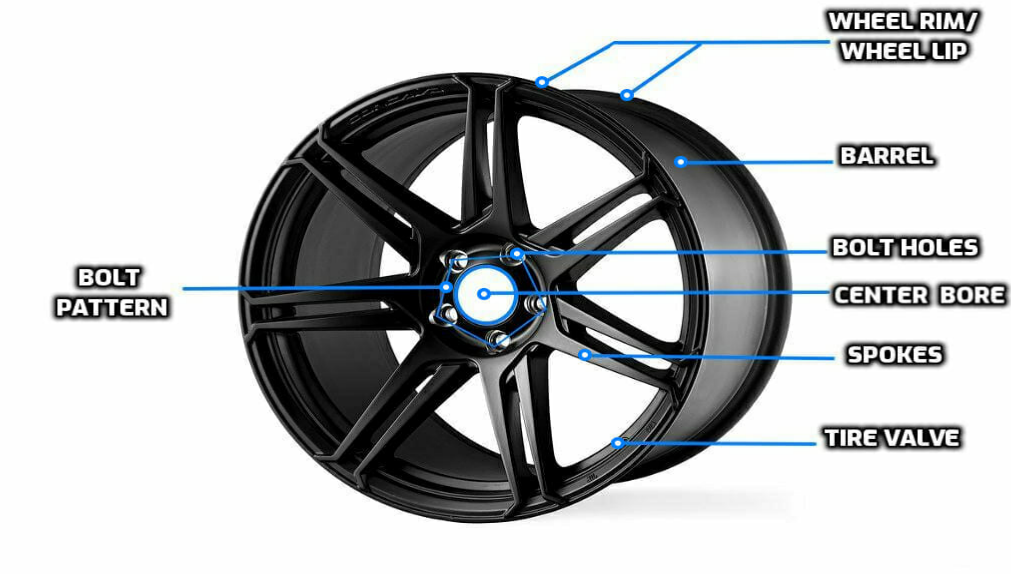
Definition of Wheel and Axle
The wheel and axle concept revolves around a larger disk (the wheel) and a smaller shaft (the axle) to which the wheel is attached. When force is applied to the wheel, the axle turns, thus transferring and amplifying the force.
- Materials: Typically, axles are made of sturdy materials like steel or iron to handle the vehicle’s weight and the force exerted on them. Wheels can be made from a variety of materials, including steel, aluminum, and alloys.Cost: The price of a wheel and axle varies greatly based on the material and intended use. For vehicles, a set of alloy wheels can range from $400 to $1,000, while a steel axle can cost anywhere from $100 to $500.
Advantages: The combination allows for easy movement of heavy loads, multiplying rotational force, and improving mechanical advantage.
Disadvantages: Wear and tear can impact performance over time, especially if not maintained or if made from inferior materials.
Principles of Operation
The operation of a wheel and axle system is based on the principle of mechanical advantage. When force is applied to the larger wheel’s circumference, it translates to greater force on the smaller axle, making it easier to perform tasks like lifting or moving heavy objects.
- Efficiency: In an ideal scenario without friction, the efficiency can be near 100%. However, real-world conditions introduce factors like friction, reducing efficiency to around 90%-95%.Specifications: The mechanical advantage of a wheel and axle is determined by the ratio of their radii. A larger wheel compared to its axle will have a greater mechanical advantage.
Advantages: By offering a mechanical advantage, the wheel and axle system reduces the effort needed to perform tasks. This principle is widely utilized in vehicles, allowing them to move heavy loads with less input power.
Disadvantages: Without proper lubrication and maintenance, friction can significantly reduce the system’s efficiency, leading to wear and potential failure.
For a more comprehensive understanding of the wheel and axle mechanism, and how it’s been used historically, the Wikipedia page on wheel and axle is an excellent resource.
The Wheel
Materials and Design
Wheels come in various designs and materials. The primary objective is to maximize strength while minimizing weight.
- Alloy Wheels: These are a blend of aluminum and other metals. Alloy wheels offer several advantages, including improved heat dissipation and better acceleration due to their lightweight nature. An average alloy wheel for a sedan may weigh around 22 pounds and can cost anywhere from $100 to $500 per wheel, depending on the design and brand. A popular choice for sports cars and luxury vehicles, their aesthetic appeal often increases a vehicle’s value.Advantages: Lightweight, enhances vehicle performance, and offers a visually appealing look.
Disadvantages: Can be more expensive to replace, more prone to damage from potholes and curbs.
- Steel Wheels: Made primarily of steel components, these are heavier than alloy wheels. A typical steel wheel might weigh around 28 pounds. They usually come in more basic designs and are often used in economy cars and trucks due to their durability and lower cost, typically ranging from $50 to $150 per wheel.Advantages: More durable, less expensive.
Disadvantages: Heavier, which can slightly reduce acceleration and fuel efficiency.
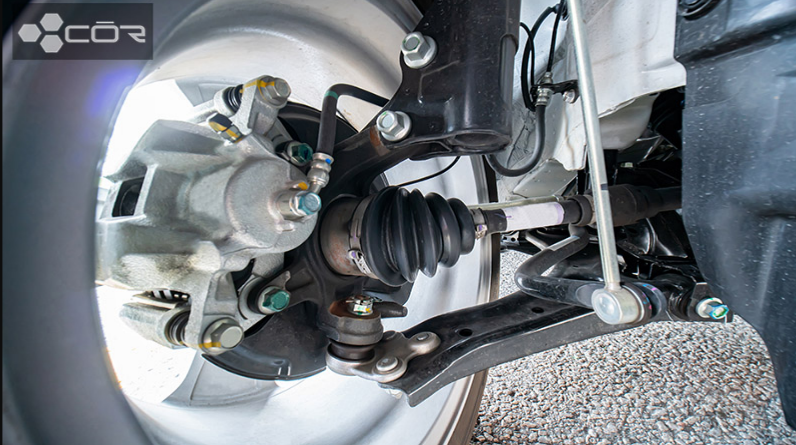
Types of Tires
Different driving conditions require different types of tires to optimize traction, fuel efficiency, and wear.
- Radial Tires: These are the most common type of tires, recognizable by the way their internal cords radiate from the center. They provide excellent traction and durability. A radial tire for a standard sedan might cost between $50 to $200, depending on the brand and specific attributes. Their average lifespan is about 40,000 to 100,000 miles, given proper care and depending on driving conditions.Advantages: Longer lifespan, better fuel efficiency, and smoother ride.
Disadvantages: Generally more expensive upfront.
- Tubeless Tires: These tires do not have an inner tube, meaning they’re less prone to punctures. Their typical price range is from $60 to $250, and they can last as long as radial tires if maintained properly.Advantages: Fewer punctures, can run for longer after being punctured.
Disadvantages: Repair can be slightly more challenging if punctured.
- All-season Tires: Designed to perform in a variety of conditions from dry to wet to mildly snowy. Their cost varies widely based on the quality and brand but typically ranges from $50 to $300. Their lifespan can range from 30,000 to 75,000 miles, depending on the driving conditions and maintenance.Advantages: Versatile, reduces the need for seasonal tire changes.
Disadvantages: Not as efficient in extreme conditions (like heavy snow or scorching heat).
Tire Maintenance and Care
To get the most out of your tires, regular maintenance is crucial. This includes:
- Checking tire pressure monthly. An optimal pressure for most sedans is around 32 to 35 psi, but always refer to the vehicle’s manual or sidewall of the tire for specific recommendations.
- Rotating tires every 6,000 to 8,000 miles ensures even wear, prolonging tire life.
- Regularly inspecting for signs of damage or wear. If the tread depth is less than 2/32 of an inch, it’s time to replace the tire.
For more comprehensive information on different types of wheels and their properties, you can refer to the Wikipedia page on car wheels. For details on tires and their specifications, the Wikipedia page on tires is a valuable resource.
The Axle
Types of Axles
The axle is a vital component in the automotive world. It bears the weight of the vehicle, passengers, and cargo, and transfers power from the engine to drive the vehicle forward.
- Front Axle: This axle is located at the front of the vehicle. It’s responsible for steering and, in many vehicles, driving the car (as in front-wheel-drive cars). The average cost for a replacement front axle ranges between $300 to $800, depending on the make and model of the vehicle.Advantages: Directs power to the wheels, allows for precise steering.
Disadvantages: Generally more prone to wear due to combined responsibilities of steering and sometimes driving.
- Rear Axle: Found at the back of the vehicle, the rear axle’s primary function is to transfer power from the drivetrain to the wheels in rear-wheel-drive vehicles. A typical replacement for a rear axle can cost between $400 to $1,000.Advantages: Offers better acceleration and traction in some conditions, especially heavy load-bearing vehicles.
Disadvantages: Can be more expensive to maintain due to the differential component.
- Drive Axle: This refers to the axle that’s connected directly to the drive shaft and provides power to the wheel. It can be either at the front or rear, depending on if the vehicle is front-wheel drive or rear-wheel drive. Replacement can range from $400 to $1,200, depending on vehicle specifications.Advantages: Direct power transmission, essential for vehicle motion.
Disadvantages: Subject to high stress and can wear out if not properly maintained.
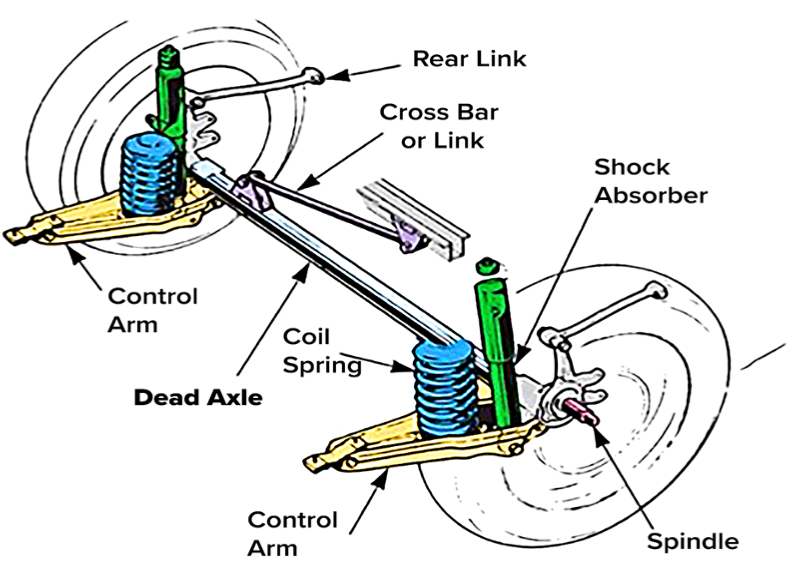
Axle Bearings and Seals
Bearings reduce friction between the axle and the wheel, ensuring smoother vehicle operation. They can last between 75,000 to 150,000 miles, depending on driving conditions. When it comes to cost, replacing axle bearings typically ranges from $150 to $400. Seals, on the other hand, prevent contaminants from entering the bearing area. They’re relatively inexpensive, with a replacement cost ranging from $20 to $80.
Advantages: Prolongs the life of the axle, ensures smooth wheel rotation.
Disadvantages: Requires regular inspection and can be damaged by severe impacts or contaminants.
The Differential
The differential allows the wheels to turn at different speeds, especially important during turns when the inside wheel travels a shorter distance than the outside wheel.
- Open Differential: This is the most common type. It splits engine torque two ways, allowing each wheel to rotate at different speeds. While it’s efficient and cost-effective, with prices for replacements averaging $500 to $1,500, it can struggle with traction when one wheel loses ground contact.Advantages: Cost-effective, simple design, and efficient.
Disadvantages: Reduced traction in challenging terrains.
- Limited-Slip Differential: It operates similarly to an open differential but has a mechanism to limit the speed difference between the wheels. This provides improved traction in slippery conditions. Replacement costs can be higher, ranging from $600 to $2,000.Advantages: Improved traction in diverse conditions.
Disadvantages: More complex and can be more expensive.
For more in-depth knowledge on axles, their types, and functionalities, consider visiting the Wikipedia page on axles. The Wikipedia page on differentials provides detailed information on how they work and their types.
Suspension System
The suspension system in a vehicle is crucial for absorbing and dampening the shocks from the road, ensuring a smooth ride and maintaining tire contact with the road, which in turn affects handling and safety.
Types of Suspension Systems
Various suspension systems cater to different types of vehicles and driving conditions:
- Coil Springs: These are the most common type of suspension springs used in cars and SUVs. They’re made from heavy-duty coiled metal and compress or expand to absorb motion. The average lifespan of coil springs is about 100,000 to 200,000 miles. Replacement costs for coil springs range from $250 to $900 for parts and labor.Advantages: Provides a smooth ride, relatively low maintenance.
Disadvantages: Not as robust for heavy loads as compared to leaf springs.
- Leaf Springs: Predominantly used in trucks and heavy-duty vehicles. They consist of several layers of metal (leaves) stacked together. The replacement cost for leaf springs can range from $300 to $1,500, depending on the vehicle and the quality of the spring.Advantages: Durable, can handle heavy loads.
Disadvantages: Provides a stiffer ride compared to coil springs.
- Air Suspension: Uses air bags instead of springs, which can be inflated or deflated to adjust ride height and firmness. While offering a plush ride, they can be expensive to repair or replace, with costs ranging from $200 to $1,000 for each air bag, not including labor.Advantages: Adjustable ride height, superior ride comfort.
Disadvantages: High maintenance cost, more components that can fail.

Shock Absorbers and Struts
Both these components are vital for dampening the oscillations of the springs, ensuring a smooth ride.
- Shock Absorbers: They absorb and dissipate the energy produced by the springs. Typically, shock absorbers last about 50,000 to 100,000 miles. Replacement costs can range from $150 to $500 for a pair, excluding labor.Advantages: Effective in smoothing out the ride, relatively inexpensive.
Disadvantages: Need to be replaced periodically, not integral to vehicle structure.
- Struts: A strut combines the function of a shock absorber and a spring in a single unit. They provide structural support to the vehicle’s suspension and are typically more expensive than shock absorbers. A strut’s lifespan is similar to shock absorbers, but replacement costs are higher, ranging from $300 to $900 for a pair, including parts and labor.Advantages: Provides structural support, combines spring and shock absorber.
Disadvantages: More expensive to replace than standalone shock absorbers.
For those interested in diving deeper into the mechanics and types of suspension systems, the Wikipedia page on suspension systems is a great resource. The page provides insights into the evolution of suspensions and details on modern advancements.
Brake System
The brake system of a vehicle is its primary safety feature, ensuring the vehicle can stop efficiently and in the shortest distance possible, thus preventing accidents.
Disc Brakes
Disc brakes utilize a flat, disc-shaped metal rotor that spins with the wheel. When the brakes are applied, calipers press brake pads against the rotor, slowing down the vehicle.
- Cost: Replacing disc brakes, including rotors and pads, can range from $300 to $1,000 per axle, depending on the vehicle and quality of the parts.Advantages: Efficient heat dissipation, consistent stopping power, self-cleaning.
Disadvantages: Can be more expensive than drum brakes, heavier.
Drum Brakes
A slightly older technology than disc brakes, drum brakes function by pressing brake shoes against the inside of a brake drum to slow down the wheel.
- Cost: Replacing drum brakes can be less expensive than disc brakes, typically ranging from $200 to $600 per axle.Advantages: Generally cheaper to produce and replace, sealed design can keep out debris.
Disadvantages: Less efficient heat dissipation, can be affected by water, less consistent stopping power compared to disc brakes.
Brake Pads and Rotors
Brake pads are the components that press against the rotor in disc brake systems. Rotors are the discs that spin with the wheel and are slowed down by the pads.
- Cost: On average, brake pads cost between $100 to $300 per set, while rotors range from $200 to $400 per pair. However, high-performance or luxury vehicles might have higher costs.Advantages: Pads are designed for optimal friction, and rotors dissipate heat effectively.
Disadvantages: Wear out over time and require periodic replacement. Inferior quality pads can cause premature rotor wear.
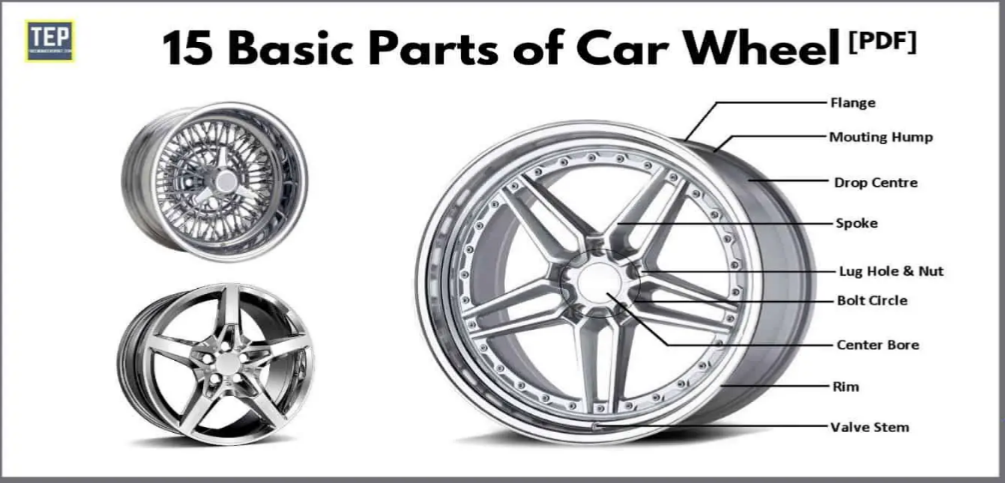
Brake Fluid and Hydraulic System
The hydraulic system uses brake fluid to transfer the force from the brake pedal to the brake assemblies on the wheels. Brake fluid should be flushed and replaced periodically as it absorbs moisture over time.
- Cost: A brake fluid flush typically costs between $70 to $150.Advantages: Hydraulic systems provide efficient force transmission, and brake fluid ensures consistent performance.
Disadvantages: Fluid can degrade over time or become contaminated, requiring periodic maintenance.
For more in-depth understanding of the brake system and its intricacies, the Wikipedia page on brake systems offers valuable insights. The article explores various braking methods, the history of brake system evolution, and modern advancements in braking technologies.
Power Transmission
Power transmission in vehicles is the process by which the engine’s power gets transferred to the wheels, enabling motion. Several components work in tandem to ensure this transmission is smooth and efficient.
Driveshaft
The driveshaft, also known as the propeller shaft, is a long tube of steel or aluminum that connects the engine to the differential in a rear-wheel or four-wheel drive system. It transmits the rotational power from the gearbox to the wheels.
- Cost: Replacing a driveshaft can range between $400 to $1,500, largely depending on the vehicle’s make and model.Advantages: Directly transfers engine’s power to the wheels, robust and durable design.
Disadvantages: Its length and material can make it vulnerable to damage or wear, especially in rugged terrains or conditions.
Universal Joints
Universal joints, often abbreviated as U-joints, are flexible pivot points that transmit power allowing for varying angles of the driveshaft. They can compensate for the height misalignment between the transmission and the rear axle.
- Cost: U-joint replacements generally range from $20 to $100 for the part, with labor costs varying based on the vehicle’s design.Advantages: Provides flexibility in power transmission, allowing for changes in the angle between the driveshaft and the components it’s connected to.
Disadvantages: Over time, U-joints can wear out, causing vibrations and noise. Regular inspection and maintenance are essential.
CV Joints
Constant Velocity (CV) joints are part of the driveshaft. They are used primarily in front-wheel drive and all-wheel drive vehicles. CV joints provide a flexible connection from the transmission to the wheel, allowing power transmission even at varied steering angles.
- Cost: Replacement costs for CV joints typically range from $300 to $1,500, including labor, with the price being contingent on the vehicle type and whether one or both joints are being replaced.Advantages: Allows for a smoother ride by compensating for changes in wheel angle. Essential for vehicles with independent wheel suspension systems.
Disadvantages: Vulnerable to damage if the protective CV boot gets damaged, leading to dirt and debris ingress. Once damaged, they can become noisy and less efficient.
To delve deeper into the technical aspects of power transmission components, consider exploring the Wikipedia page on driveshafts. It offers a comprehensive understanding of how these components work together, historical evolution, and innovations in the field.
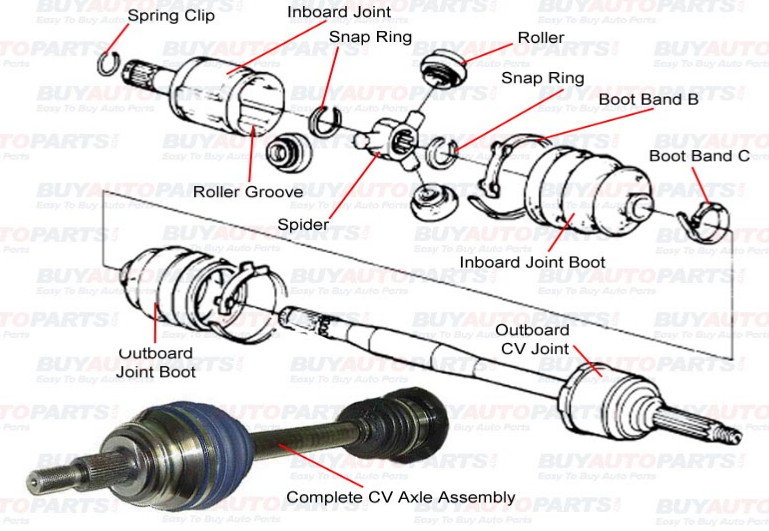
Steering Mechanism
The steering mechanism is a complex system that enables the driver to direct the vehicle in the desired direction. Let’s delve into its main components and understand their importance.
Steering Wheel
The most direct interface between the driver and the vehicle, the steering wheel allows the driver to control the direction of the vehicle.
- Cost: A replacement steering wheel can range from $50 for basic models to upwards of $1,000 for high-end or specialized steering wheels.Advantages: Direct control over vehicle direction, responsive feedback to the driver.
Disadvantages: Wear over time, especially on the grip, can lead to reduced control. Specialized or custom steering wheels can be expensive.
Steering Column
The steering column connects the steering wheel to the steering mechanism below. It usually houses other controls like turn signals, horn, and in some cases, ignition.
- Cost: Replacing a steering column, depending on the complexity and vehicle, can range from $300 to $1,200, including labor.Advantages: Houses multiple controls, adjustable in modern vehicles for driver comfort.
Disadvantages: Complex designs can lead to expensive repairs. Damage to the column can impact multiple functions.
Steering Gear Box
The gearbox converts the rotational movement of the steering wheel into the linear movement needed to turn the wheels. It’s a crucial component in the steering mechanism.
- Cost: The cost to replace a steering gearbox can vary widely, from $150 to $1,000, depending on the vehicle and type of gearbox.Advantages: Provides mechanical advantage, making it easier to turn the wheels, especially at low speeds.
Disadvantages: Wear and tear over time can lead to “play” in the steering or make steering feel loose.
Power Steering Pump
In vehicles with power steering, the pump provides the necessary hydraulic force that assists in turning the wheels, making steering significantly easier.
- Cost: A power steering pump replacement typically ranges from $200 to $500, excluding labor costs.Advantages: Reduces the effort needed to steer, especially at low speeds or in vehicles with larger tires.
Disadvantages: Dependent on hydraulic fluid, which can leak over time. Malfunctions can lead to hard steering or steering noise.
For a comprehensive overview of the steering system, its history, and various types used in vehicles, the Wikipedia page on steering serves as an excellent reference. The page provides insights into how steering mechanisms have evolved and the innovations driving modern systems.
Maintenance and Troubleshooting
A vehicle’s performance and lifespan greatly depend on regular maintenance and effective troubleshooting of problems. By identifying and resolving issues early, you can save on costly repairs and extend your vehicle’s life.
Common Wheel Problems
Wheels, being directly in contact with the road, face various issues:
- Wheel Misalignment: Causes uneven tire wear and a vehicle that drifts to one side. Regular alignment checks can prevent this. Costs for wheel alignment can range from $60 to $150.Advantages of addressing: Improves tire lifespan, better fuel efficiency, smoother driving experience.
Disadvantages of neglect: Reduced tire life, decreased fuel efficiency, compromised safety.
- Wheel Imbalance: Leads to vibrations in the steering wheel and irregular tire wear. Addressing it requires balancing the wheels, which may cost between $15 to $75 per wheel.Advantages of addressing: Smooth driving, extended tire lifespan.
Disadvantages of neglect: Reduced driving comfort, increased tire wear, potential damage to suspension components.
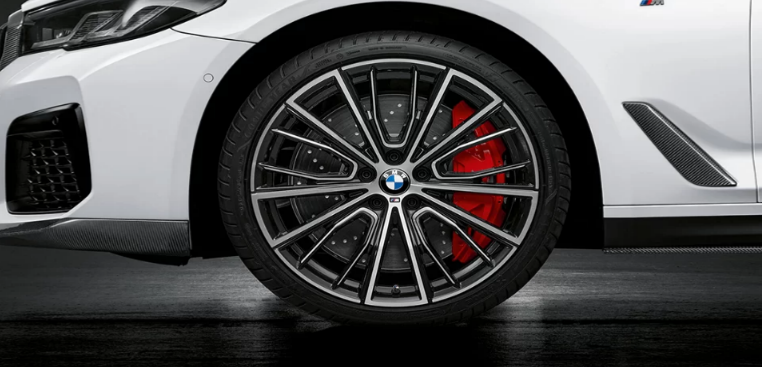
Common Axle Issues
The axle, being a primary component in driving the vehicle, can face several problems:
- Axle Seal Leaks: If the seal around the axle is damaged, it may leak fluid. Fixing this typically costs between $150 to $400, depending on the severity of the leak.Advantages of addressing: Prevents more severe damage, maintains optimal vehicle performance.
Disadvantages of neglect: Can lead to bearing damage, potential axle failure, costly repairs down the line.
- Worn-out CV Joints: Clicking or popping noises when turning are signs of this issue. Replacement costs can range from $300 to $1,500, including labor, based on the vehicle and the specific joint.Advantages of addressing: Ensures smooth power transmission, prevents potential on-road breakdowns.
Disadvantages of neglect: Can lead to complete joint failure, loss of vehicle control.
Tips for Maintenance
- Regular Inspection: At least once a year, or every 10,000 to 15,000 miles, get your vehicle inspected for potential problems.
- Promptly Address Noises: Any unusual noise, be it from the wheels, axles, or any other part, should be investigated immediately.
- Check Tire Pressure Monthly: Proper tire pressure ensures even tire wear and optimal fuel efficiency. An optimal range for most sedans is around 32 to 35 psi.
- Replace Fluids: Regularly change essential fluids, such as brake fluid and transmission fluid, as per the manufacturer’s recommendations.
By keeping an eye out for common issues and adhering to a regular maintenance schedule, you can ensure your vehicle’s longevity and optimal performance. The Wikipedia page on car maintenance offers a broad overview of various aspects of maintaining a vehicle and the significance of each.
